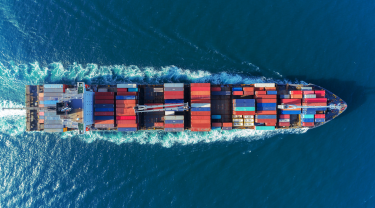As an advisor on Export Development Canada (EDC’s) Global Trade Services team, my days are spent helping connect Canadian exporters to potential global business opportunities through EDC’s Business Connections Program.
One of the most important aspects of our team’s role is helping these companies understand—and plan—for the risks involved when doing business abroad. Because, of course, where there’s opportunity, there’s risk.
Is the world riskier now?
The U.S.-China trade war. The rise of populist movements. An impending recession. There’s no shortage of negative headlines or dire predictions. But are international markets actually riskier now? Should you simply pick up your marbles and go home? Absolutely not: There’s no such thing as a sure thing or perfect timing. But you do need to be aware, and you need a plan.
Educate yourself
EDC spends a lot of time understanding and evaluating global risks. We have to, since those risks are essential parts in the equation we use to assess which business deals we’re going to finance and insure. We live and breathe risk, so it should come as no surprise that we’re among the leading international business risk experts in Canada.
So what do you get when you fill a boardroom with a team of economists and ask them to identify which global risks are the most prevalent and relevant? Well, you get a whole lot of discussion, analysis, weighing of probabilities and evaluation of possible outcomes. Then, ultimately, you get a list of the Top 10 Global Risks. It’s one of our key bi-annual reports and a quick read that will get you up to speed with global events and, specifically, how they affect Canadian businesses like yours. Another great resource is our Country Risk Quarterly reports. This interactive platform lets you choose the markets you’re most interested in to learn more about their specific key risk ratings.
And while it’s critical to understand the changing geo-political, social and economic stormclouds that are on the horizon, you should also have a thorough understanding of the garden-variety types of risk that are out there every day, regardless of current events. Even on a good newsday, doing business abroad comes with a host of country, political, financial, cyber and supply chain risks. Foreign exchange fluctuations can really do a number on your bottom line. Every country has its own laws and regulations governing trade, and you need to understand how these might affect your operations. So first, familiarize yourself with the possible risks that might occur in your market of opportunity; and second, assess what the impact would be on your business if those risks actually occurred.
Develop a risk-management plan
Going through the process of developing a risk-management plan helps play out potential problems, so you can develop possible solutions and action plans before an actual situation arises. You need to ask yourself a whole lot of “what ifs?” What if your supplier goes bankrupt? What if your goods get stuck in customs? What if new tariffs are introduced?
Once you’ve identified and assessed each of those risks and their impacts, you can move on to planning your response. Essentially, for every risk, there are four possible response scenarios.
4 risk-management response options
1. Avoid
Maybe after careful consideration, you’ve determined that doing business in a particular country is just too risky at this time. Perhaps there’s a lot of civil unrest, or an election is imminent, and you’d like to wait until the dust has settled. You’re not saying never, just not now.
2. Reduce
Sometimes there are risks, but if you take certain precautions, you can alleviate their impact. For example, if there are safety concerns in a certain region, you can train your employees on safety measures to help reduce the likelihood of an incident happening.
3. Transfer
Transfering risk refers to finding ways to have someone else assume the responsibility. Let’s say you’re not sure if a new customer on the other side of the world will actually pay for the goods you’ve just shipped. There’s a simple solution: credit insurance. By paying a small margin, you can offset the risk of non-payment to an insurer.
4. Accept
At the end of the day, sometimes the opportunity is worth all of the risks—especially if you’ve found ways to reduce and transfer as much of the burden as possible, and have planned for all eventualities. Risk is inherent in all business; in fact, there’s sometimes more of a risk in not acting.
Move forward … and monitor
Once you’ve developed your risk management strategy, there’s one more critical step to consider: routine monitoring. Risks don’t stand still; in fact, they tend to move around quite a bit. You’ll need to re-evaluate them periodically, just in case things heat up. Or, as in the “avoid” scenario mentioned above, maybe the time has come to enter the new market that was too risky just 10 months ago. Identifying and assigning the task of a risk manager is invaluable to your company’s peace of mind as you move forward. That person should be responsible for clearly articulating your risk strategy, monitoring the changing landscape and coming up with alternative responses to fill in any gaps. Presenting these findings in quarterly or bi-annual meetings will ensure all executives are in the loop and can make informed decisions.
Reap the rewards of planning ahead
Having a mitigation strategy in place will reduce the impacts of various risks on your company. By anticipating problems, you’ll be better positioned to overcome them, then pivot to your next move. This translates not only into higher confidence levels within your own organization, but externally as well. There’s a lot of equity that accrues from sound risk management practices in the eyes of your customers and investors.
Helpful resources
One of the best ways to truly understand an international market is by being there, which is why the Trade Commissioner Service (TCS) is among the most important resources you can rely on for in-market intelligence. The TCS has 1,000-plus trade professionals and commissioners working in more than 160 posts around the globe. They can help you understand the risks inherent in each of those markets, and introduce you to vetted trade partners on the ground. That includes accountants for economic risks, lawyers for legal risks, interpreters for cultural risks, customs brokers for customs risks, and all the other players you’ll need on your team. They can assist you in vetting new customers in those markets—giving you the inside scoop as to whether or not they’re known as trustworthy. They can even put you in touch with the right government officials to overcome regulatory risks, and in some cases, troubleshoot on your behalf.
EDC is here to help as well. In addition to the risk resources mentioned earlier, we’ve developed a free guide for exporters on managing risk, which includes a template for getting started on your risk management plan. Have questions? Tap into our Export Help Hub. It’s an online platform available free of charge, 24/7. Not only will you find answers to commonly asked trade-related questions, but you can ask specific questions of our trade advisors. They’ll get back to you with answers, and point you in the right direction to further your research so you can plan your own risk strategy.






